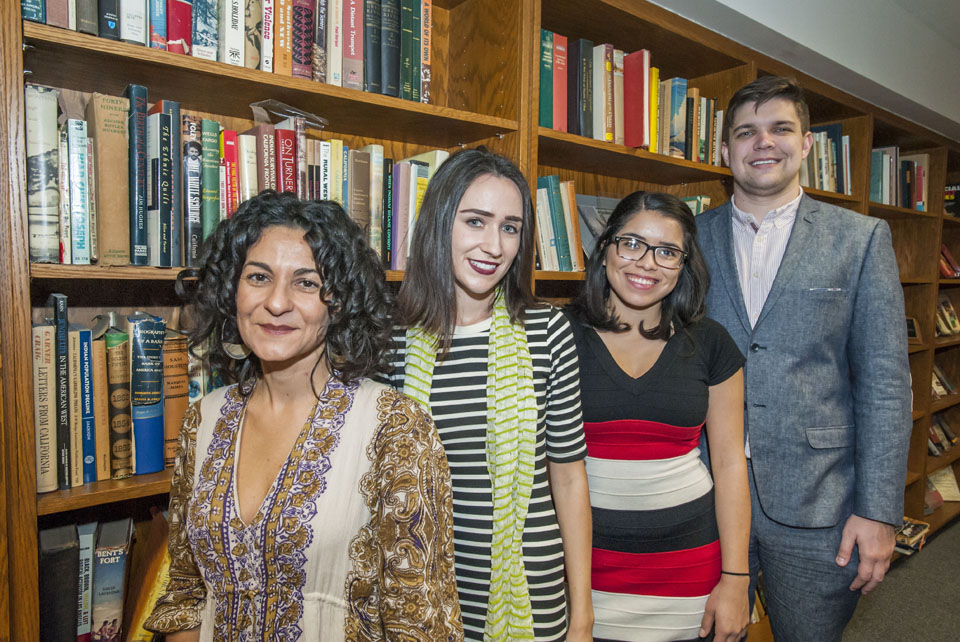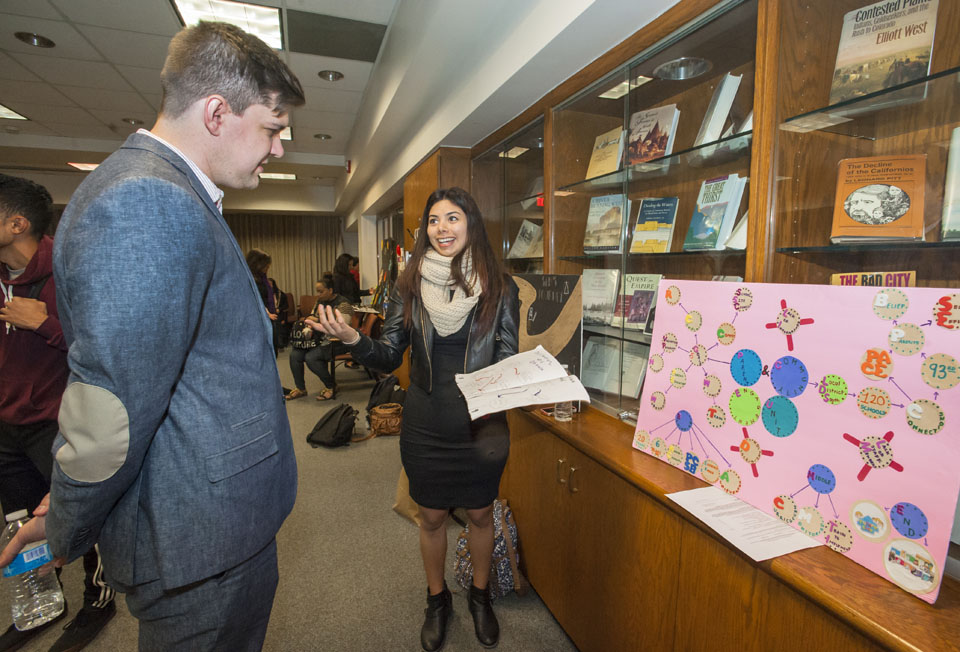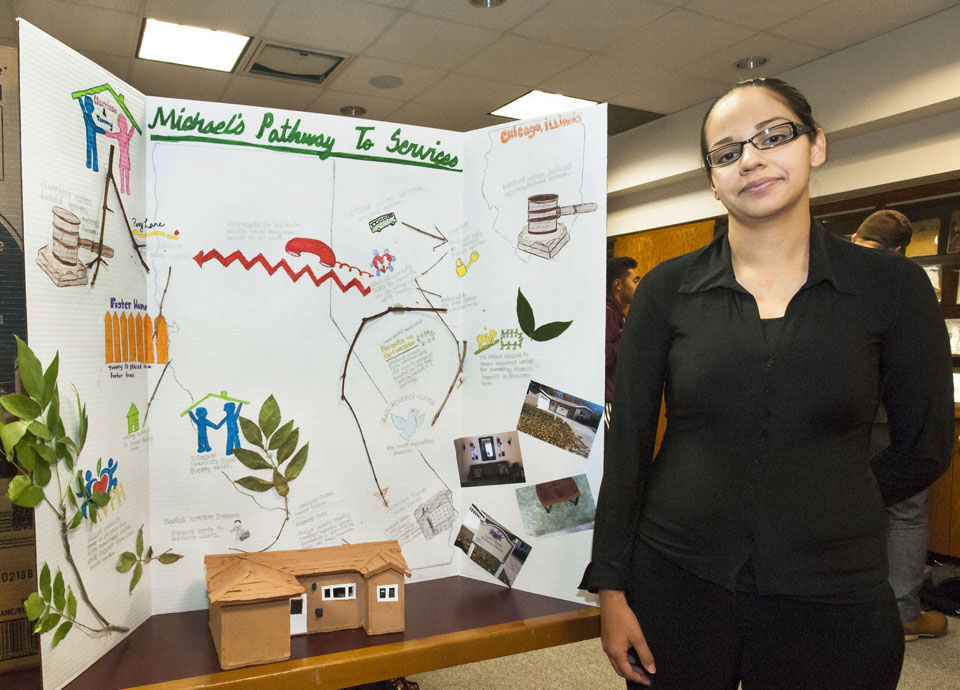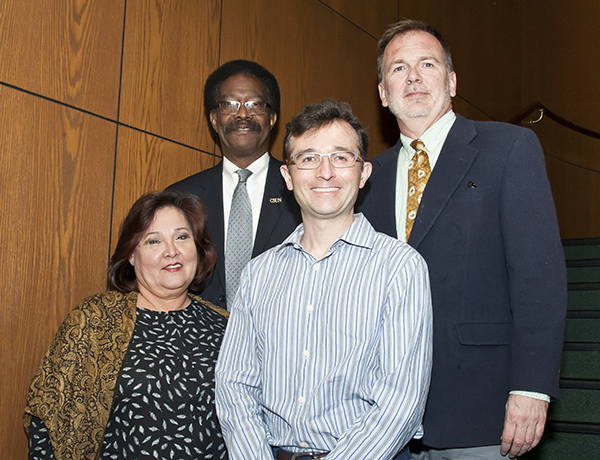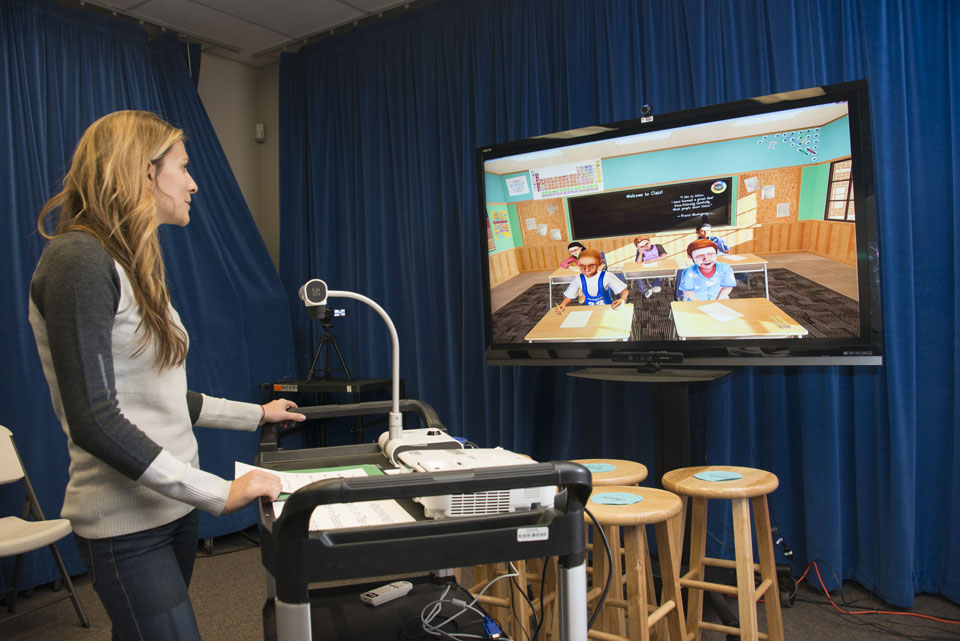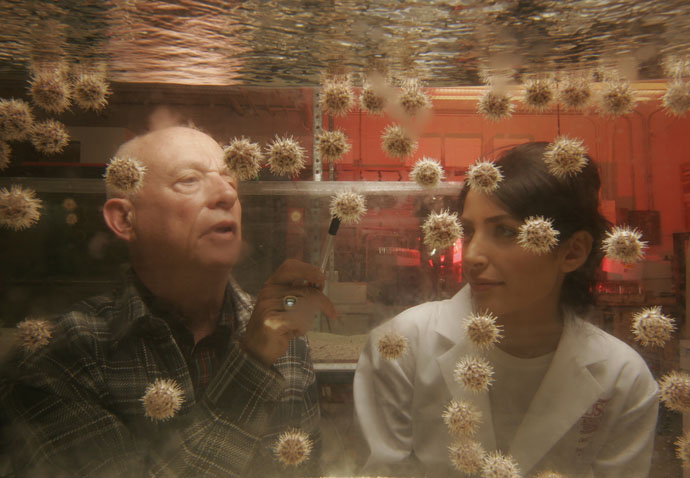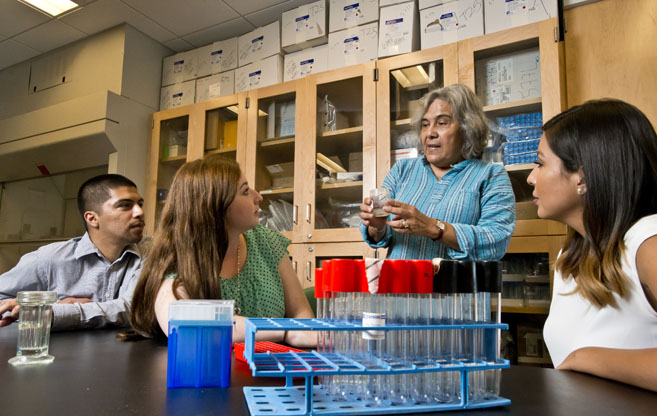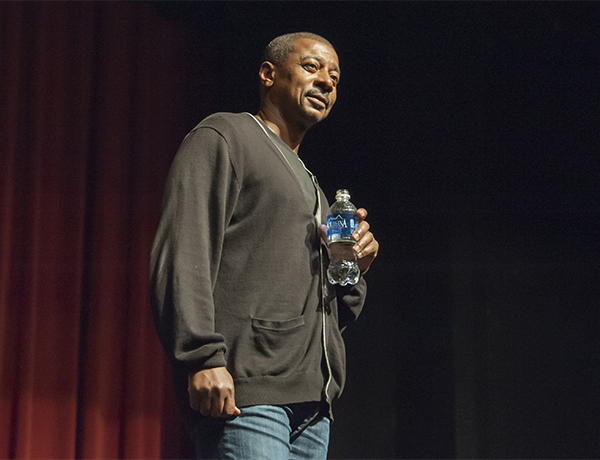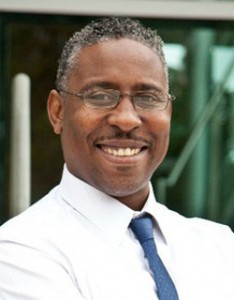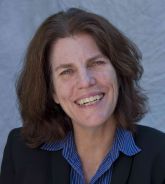![]()
Walking across the campus of California State University, Northridge, you’d be hard pressed to find a student whose life has not been touched by Debra Hammond, executive director of the University Student Union (USU). Whether they sit under an umbrella in the USU courtyard, run on a treadmill in the Student Recreation Center or attend a lecture in the Grand Salon, hundreds of thousands of students over the years have been positively impacted by Hammond. For that, the California State University (CSU) Board of Trustees recognized her with its highest honor, the Wang Family Excellence Award, on Tuesday, Jan. 26.
So what drives Hammond to work as hard as she does? What makes her shine? Hammond reflects on her experience and offers valuable wisdom for all CSUN students.
Q. Congratulations on the award! How do you feel?
It feels surreal. It’s overwhelming and amazing — all of those things wrapped up into one. It’s wonderful to have your work recognized like this. This work is what I love to do. There are a lot of people on this campus who really care about the students, so I’m just really honored and humbled to receive this.
Q. You’ve been working at this campus for 22 years, you seem to have really made CSUN your home.
“I have! I love CSUN. There are three main reasons why I have stayed here.
First, I love the students. I love the fact that we serve so many first-generation students and that we are a Hispanic serving institution. The diversity of CSUN enriches us all. Students want to be here and I think our students have a deeper appreciation for college because they know that by going to CSUN it’s a game changer — not just for them, but for their families. It can change future generations of families. We have the opportunity to expose students to concepts, ideas, thoughts, things they have not necessarily seen before but they want to explore. And they have a right to do that. We are not a USC, [our students] are not students who [have] legacies in their families for generations. We are starting something here. What we do is important. And that’s why I continue to do it.
The other thing is that I absolutely love the staff I work with. They are really creative, innovative, energetic, enthusiastic, never-say-no kind of people. They want to serve. Our philosophy in the student union is about servant-leadership. So our job is to serve first and then we lead and teach as we are doing that. We consider ourselves educators outside of the classroom. We are in partnership with the academic side of the house and that’s really important to us.
The third reason why I’ve stayed here is the support from the leadership of the institution. What they have allowed us to do here is to be creative, to have an idea and say, okay, we can actually bring it to fruition, and not say no. We have some freedom and latitude. If we can work with students and help them realize concepts or programs that are really important – then we can be deeply instrumental in connecting them with the campus, staying here and graduating. Student success is what drives me.
Q. Other than your work for the USU, you teach graduate courses in the college counseling and student services program. How do you do it?
I love it because if you work all day and teach in the evening, it gives you a different kind of energy. The students who are in the master’s program also want to be there. I think my responsibility is to mentor people well. My job is to prepare the next generation of people who are going to take my job. I don’t want them to come out and not have the skill sets and the passion needed to do this kind of work. You have to be compassionate and competent.
Q. So many people on this campus are passionate about what they do, such as yourself. How important is that passion?
The passion of the people here — that’s what gets me out of bed in the morning and say: “I’m going to work!” I’ve always wanted a job that didn’t feel laborious. It should be something that you want to do, where you are being of service, having an impact, contributing to a great good. I get to do that every day. I see some people who hate their jobs and I say find something that inspires you! You have to think about it, you really have to know yourself. You have to figure out what is going to make you happy and sustain you for a long period of time. I think a lot of the professions we choose are related to who we are and what our values are, so if you know yourself, it’s a lot easier to be clear about what you want to do for your future, and that doesn’t mean you have to do that forever. But if you have a number of passions, strengths and talents, you need to figure out how to coalesce them together to create a career for yourself where you are going to be happy.
Q. How did you figure out that this was what you wanted to do?
I was a sociology major and criminal justice minor in college and I spent one semester working in a prison. I hated it. It was soul sucking and I said, “I cannot do this job.” I started being much more reflective about what I wanted to do and what it is that I loved doing. I loved planning programs on the campus. I was involved as a student leader at Rutgers so I talked to some mentors who showed me there was a career in higher education administration and that people did this for a living. I shadowed some people and I took a part-time job as an assistant to the dean for minority affairs, which was academic counseling and social programming. And I took it even though it was part time — some people now don’t want to take things that are part time, but you’ve got to get your foot in the door. That job led to another part-time job, so I had two part time positions. Six months later, I got a full-time position and two years after that I became the assistant dean of students and the director of the campus center. It was about being at the right place at the right time and letting your work speak for you.
Q. We’ve had many new resource centers open up since 2012, such as the Pride Center, the Veterans Resource Center and the Oasis Wellness Center. How did all these projects come about?
With the Pride Center and Veterans Resource Center, most of it came from the students. The LGBTQ students and the veteran students both approached the USU Board of Directors the same year and wanted centers. They had petitions and voices – it was a movement. At the end of the year, the USU wanted to dedicate space to them, but because we are an auxiliary, we had to charge for the space. We asked them if they could raise money for the space, but that didn’t happen. So we had to ask ourselves, are we really committed to this and is this something the USU could take on? We sat down and put together a budget, and we worked with the students and with faculty and staff from those communities over the course of a year to get that program up and running. We applied for campus quality fees, we hired a former student to develop the programs, and the student union contributed the space and infrastructure. And now the spaces are bigger and in different areas because more people are using them. The Pride Center moved into the USU Sol Center building and now it’s about three times the size it used to be. The Veterans Resource Center now encompasses the space where the Pride Center used to be, and now it has doubled in size.
The concept of the Oasis Wellness Center came from listening to the students. I am a huge believer in assessment so that we can make effective decisions. Sitting with a group of students and listening to what they say and what they need is amazing, because they will tell you exactly what they think and feel. And then it’s our job to figure out what it is we can put in place to address those issues. That’s how the wellness center really came about. We also worked with campus colleagues – faculty and staff from the Klotz Health Center, University Counseling Services and the College of Health & Human Development to refine the concept. We did some research, some surveys, focus groups and based on the National Collegiate Health Assessment, we committed to trying to do something about student stress and lack of sleep. We wanted to create something of quality. We visited other campuses and saw their wellness centers, and some were tiny with three bean bag chairs on the floor. And I said, oh no – that’s not my idea of what it should look like, based on what the students said they needed.
Q. You’ve been in college or working at colleges for most of your life. What do you see that has changed during that time and what has remained the same? Are there any new challenges that students have?
There are some things that are the same and some things that are different. I think a big challenge for students is having so many competing priorities. There are so many things to worry about because they have to work, they have to put a certain amount of time into their school, their families. I was doing a workshop for students called ‘What’s on Your Plate?” and I asked them to identify the things that they do in a day. They were adding up their time and on average it was 18 or 20 hours a day without factoring in sleep. So if you are a student and are working or have other commitments and it’s taking up all these hours in your life – and there are only 24 in a day, something is going to be compromised. Some people don’t have an understanding of just how important sleep is! I like sleep, it’s restorative. For me, seven hours is optimally what I would like to have, but most nights I get about 6.5 hours. There are a couple nights when I get four hours and I don’t function as well the next day and I’ve got to make up for it.
Technology was a game-changer — it’s a different world now. Students have the devices in their faces all day long, but that’s how they communicate. I remember when a young staff member sent me a text saying they are going to be sick and I thought, how come he’s not calling me? But that’s not how people communicate any longer. And social media does suck up time. You can use it for good and not as a time waster, but it’s about discerning between those things.
Q. You are known to help students deepen their connection to the university to get them to graduation. Many of our students are low-income and the first in their families to go to college, so that must be especially important for these students.
That’s why I have such a deep appreciation for students at CSUN. They know this can open up all sorts of doors for them. They know this is an opportunity that they need to take advantage of. CSUN provides hope, it promotes dreams and positive change. The greatest gift is a change in mindset, how you feel in your heart — it’s not just an exercise. Younger siblings and relatives come and see their brother or sister graduate and that encourages the next generation. Education provides options and opportunities and that is the true value of education. It’s not just to get a degree or just get a good job, it’s to explore, to come to know yourself and figure out who you are in the world, how you can contribute while still taking care of your family and being happy.
Q. Being happy — do you try to teach your students the importance of that?
I try to teach my students that they should enjoy their lives. I want them to work hard but also have fun. You may not be able to do it all at the same time, and not at the same degree. It’s about work-life rhythm. There is a rhythm to your life and if you can figure out the rhythm of your life, wouldn’t that feel good? It’s about choices, and sometimes we don’t always make the best choices for ourselves. We’ve got to figure out ways to help students make better choices. You can do it all, but not all at the same time.
Q. What is the biggest challenge you have faced in your time at CSUN?
I started working here about a month before the Northridge earthquake. Recovering from the earthquake was huge. When I first got here we had almost 31,000 students and after the earthquake when we reopened in February, we had 23,000. That was a huge drop and our budget is driven by student fees. We had to figure out what we needed to do in order to keep the programs open and not lay people off. We were one of the few buildings on campus that was standing and that was secure. Counseling services, admissions and records, and the art department occupied our building. We also used it for classroom space. One of the biggest lessons I learned — was having to figure out and navigate a new system in the midst of a crisis and how to innovate while you are recovering.
I’m somebody who believes all things happen for a reason. If you learn the lessons from an experience, then you are better prepared for it the next time or that particular lesson is not repeated. That was a great opportunity to learn and meet people, to see people come together to do something and repair the campus. We opened about a month later, and we all figured out how we were going to make that work. We had some tough, lean years during that time period. It was also an opportunity to look at things with new eyes and truly ask ourselves, what do students really need and what do they care about? Why are we even doing this particular thing? Sometimes you are doing things because we’ve always done them, but not because it’s what people need. It was a time for action as well as reflection.
Q. What a way to start at CSUN!
“I know! It was like baptism by fire.”
Q. What is the greatest thing you have learned from your students?
The greatest lesson I get from students is how to really listen. You have to keep asking those questions – being open to new thoughts and discovery. I think that as directors of departments, we can have a lot of preconceived notions about what we think is right. Sometimes we go into meetings or situations with those notions, and they are not always right. So we have to be open enough to really hear people, listen and hear at a deeper level and then ask questions. That’s the greatest tool we have. It is our ability to ask questions and then listen for the answers as opposed to mentally preparing our arguments. We have to overcome that. And I get that lesson over and over again. It’s like yoga or meditation – something you have to continually practice while mitigating distractions.
Q. What are your future goals and plans?
I have lots of ideas, but it’s all about deepening students’ connection to the campus and figuring out how we can serve them better to achieve their educational goals and change their lives. We are possibly envisioning a new center, a ‘center on centers,’ so we can put all of our resource centers into one space. They would all still have their own identities, but they would be able to collaborate together. We are in the exploration phase of this concept and we are going to talk to students and other stakeholders about it. With our current centers, we can see the difference in how various communities feel about the institution. These centers help students feel safe on campus, feel accepted; this is a place for them. That’s what deepens the connection between the students and CSUN and that’s one of the things that gets them through. So these physical spaces are not just because we think it’s nice to have, it’s deeper than that. There is a physiological, psychological connection that’s formed and that’s really important in making sure people feel like they are included, their existence is validated and they matter to this institution.
And then we’ll see where the next road takes me. I’m not quite sure where that’s going to be, but that’s a good thing.
